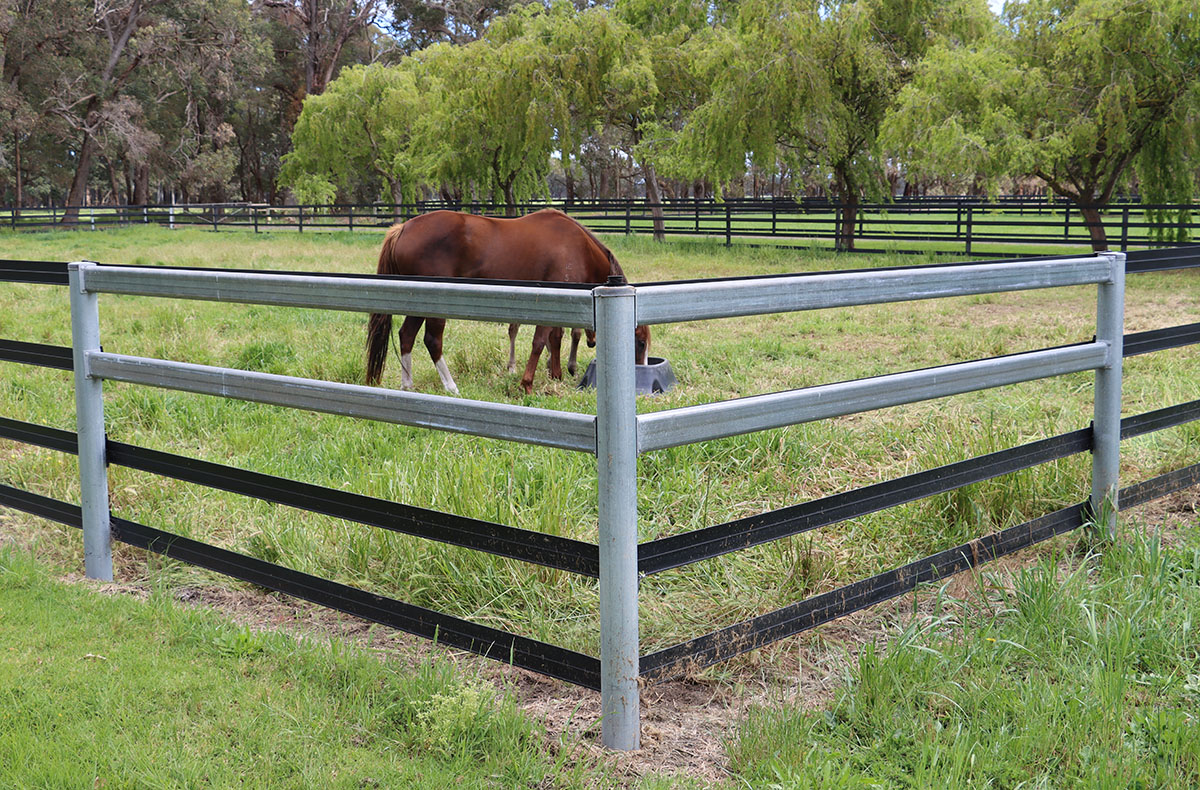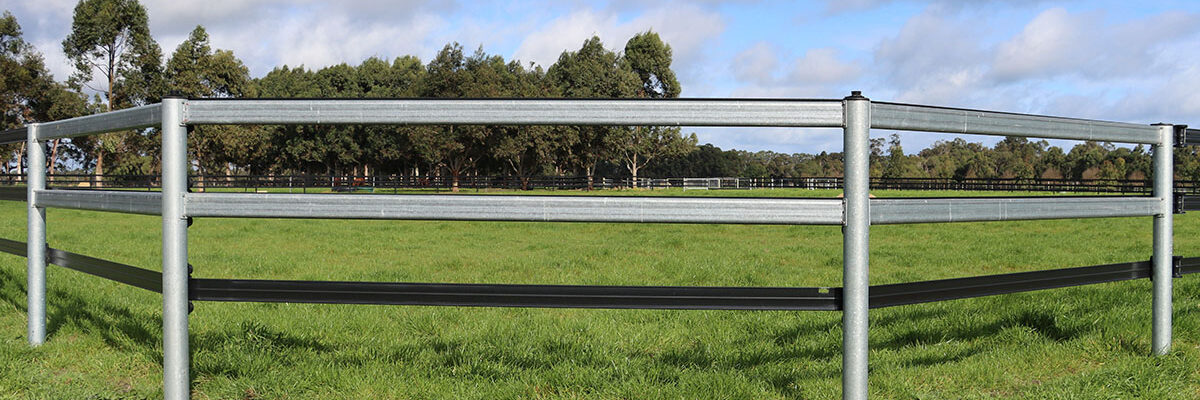Are end assemblies important when completing your horse fencing installation? Yes! Do not let anyone talk you out of them. They are the most important part of your horse fence. If a fencing contractor tells you you don’t need end assemblies, you can be pretty confident they are not a very good contractor!
End assemblies, box assemblies, stays, end bracing, they are all the same thing. You will need an assembly on either side of any gate you have in your horse paddock, as well as every corner. You will also need one if your fence line has a large change of angle or change of direction.
Rule 1: Stronger is better
End assemblies add strength to your horse fence and basically holds it up. Without them, very quickly your fence will start to sag, and your posts will start to pull over from the strain of the flexible rail or coated wire.
To build a good solid end assembly you will need good solid strainer posts. The rule of thumb with strainer posts is half of the post in the ground and half out of the ground.

Rule 2: Don’t use short posts.
Do not use short posts or posts that are the same length or width as your line posts. Line posts are different. With nearly all of the fences we supply the height is 1350-1500mm and so your strainer posts should be a minimum of three meters long and a minimum width of 150mm for timber posts and if using steel posts, a minimum width of 114mm. if you are building for smaller horses and your fence is only going to be 1200mm high then your strainer post needs to be 2.4m long The strainers should be 3meters apart in the ground with a minimum of one vertical strut between. You can use one strut and an angled threaded rod between the two posts or two vertical struts. Depends on your contractor, your budget and how you want your fence to look.
Just a note about contractors. When they are quoting you, you will usually be quoted per meter as well as per end assembly. There is quite a bit involved with the construction as well as the correct placement. So don’t be overwhelmed with seeing them listed in your contractor quote. Depending on construction and your budget an assembly can cost between $80 to $250.

Rule 3: Three strainers is general
In the corners of your horse paddock fencing you will usually have three strainer posts, this is often called an L assembly or two panel assembly, as it is usually around 90deg angle. One strainer post in the very corner and a panel either side, positioned depending on the angle of your fence. If you are avoiding corners and trying to have a curve, then the corner assembly with change and is called a splayed or beveled corner. You will have three or even four panels. You will need a minimum of four strainers depending on the shape of your ‘corner’.
Any changes in the angle of your fence like around a bend or a change of direction we also recommend splayed bracing to provide strength for your fence. This will stop your posts pulling inwards or leaning to one side.
You want your horse fence to last you as long as possible. You also want your horse rail to stay nice, straight and tight. You don’t want to have to be redoing things because you didn’t do it right the first time. So make sure you invest in the construction of good, strong, well made end assemblies.










